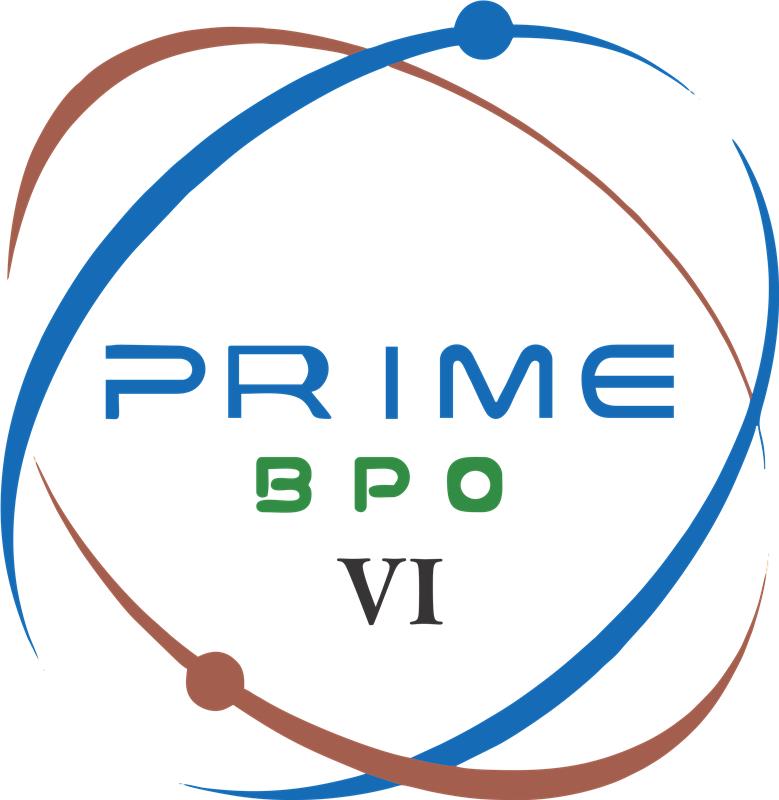Companies are constantly looking for ways to remain competitive and agile in today's dynamic business environment. Outsourcing is one of the most popular strategies today. Third-party outsourcing allows businesses to focus on their core competencies and strategic objectives by delegating non-core activities to third parties. Despite its challenges, outsourcing can be mastered. To be successful, you need to plan, communicate effectively, and have a solid understanding of how outsourcing works.
This comprehensive guide explores 7 steps to successful outsourcing. Following these steps will enable you to master outsourcing and achieve successful outcomes. You can use these steps to navigate your outsourcing journey effectively, regardless of your goal: reducing costs, improving efficiency, or gaining specialized expertise.
What is Outsourcing?
The outsourcing of business functions and processes is a method of contracting out those functions and processes to third parties. External vendors can perform these tasks instead of companies performing them in-house. Outsourcing can include accounting, human resources, manufacturing, and more besides customer service and IT.
Get Free Quotes
Customized Options Await
The main goals of outsourcing are to reduce costs, increase efficiency, and gain access to specialized skills or resources. To differentiate themselves from competitors, companies should outsource non-core functions. By doing so, they can devote time, energy, and resources to activities that drive value and competitive advantage.
7 Steps to Successful Outsourcing
Businesses are increasingly turning to outsourcing to optimize operations, reduce costs, and access specialized skills. The key to successful outsourcing is to plan and execute it carefully. The following 7 steps to successful outsourcing will help you master the art of outsourcing:
Define Your Objectives
Clearly defining your objectives is crucial before outsourcing. Decide why you're outsourcing and what you want to accomplish. No matter what your goals are, expressing them will help you to set expectations and guide decision-making.
It is essential to align your outsourcing strategy with your overall business goals. Additionally, it allows all parties to understand the desired outcomes, resulting in more informed decisions and improved communication throughout the process.
Identify What Needs to Be Outsourced
It is possible to outsource specific processes or tasks to external vendors. You should spend more time on non-core activities that experts can handle more efficiently, such as IT services, customer service, and research and development. An external company can handle these tasks for you, allowing you to free up internal resources to focus on key aspects of your business.
Evaluation of your current infrastructure and capabilities will also help you determine which tasks are best suited for outsourcing. Maintaining control over critical business functions while outsourcing tasks that can benefit from external expertise is important.
Evaluate the Costs of Outsourcing
Including recruitment costs, training costs, and restructuring costs, assess the costs associated with outsourcing. Compare the potential savings and costs of outsourcing with the benefits of outsourcing. As well as considering potential risks, it's important to consider short- and long-term outsourcing costs.
Ensure that outsourcing exceeds the costs of your organization by assessing the financial impact of outsourcing. Outsourcing can maximize your benefits by carefully evaluating the costs involved.
Understand the Constraints and Advantages of Outsourcing
Make sure you consider the constraints, challenges, and advantages of outsourcing before making a decision. It includes issues related to the environment, regulations, country standards, and technological advancements. Planning for potential challenges is easier when you understand these factors.
Aside from cost savings, outsourcing also offers access to specialized skills. By weighing the advantages and limitations of outsourcing, you can determine if it's the right strategy for your business and prepare for any challenges that may arise.
Choose the Right Outsourcing Model
Selecting an outsourcing model that aligns with your business strategy and project requirements is crucial. The right model can enhance your project's success, flexibility, and efficiency.
Get Free Quotes
Customized Options Await
Project-Based Outsourcing is ideal for one-time projects with clear deadlines and deliverables. It's cost-effective and allows for easy scalability and flexibility. For example Developing a new website or a specific software application.
Managed Services: This involves outsourcing an entire business function, such as IT support or customer service, on a long-term basis. The provider manages the day-to-day execution of tasks.
Benefits: Access to specialized skills and continuous improvement in processes.
Dedicated Team Model: You get a team that works exclusively on your projects, offering a high level of integration with your internal team.
Consideration: Best for long-term projects requiring close collaboration.
Communicate Your Expectations
Successful outsourcing requires effective communication. Communicate with your outsourcing partner your expectations, requirements, and outcomes. This prevents misunderstandings and ensures that both parties are on the same page.
Maintaining regular contact throughout the outsourcing process is crucial to establishing clear channels of communication from the start. To achieve the same goals, both parties need to communicate their expectations. This process includes informing internal stakeholders and addressing concerns if they arise.
Strike the Deal with the Right Partner
Selecting the right outsourcing partner is another step to successful outsourcing. Consider the reputation, service levels, and costs of potential vendors before selecting them. Ensure that the contract is comprehensive, explicit, and reflects the ethics and principles that govern your organization.
Furthermore, both parties must be committed to the long-term success of the outsourcing partnership. Establishing a mutually beneficial relationship with the right partner can help your business grow and become more efficient.
Navigate Cultural and Geographic Differences
Working across borders means bridging cultural and geographic divides, turning potential challenges into strengths.
Understand Cultural Nuances: Invest time in learning about the cultural background, business etiquette, and communication styles of your outsourcing partner. Strategy: Conduct cultural training for both teams to foster mutual understanding and respect.
Establish Common Ground: Agree on communication tools and platforms that suit both parties and set common working hours if possible, to increase real-time collaboration. For example using collaboration tools like Slack or Teams to bridge time zone differences.
Celebrate Diversity: Embrace the diverse perspectives and innovative approaches brought by your outsourcing partner to enrich your projects.
Measure the Performance
Evaluation of the performance of your outsourcing arrangement should be done regularly against predetermined key performance indicators (KPIs). Be aware of any gaps in the outsourcing partnership and take corrective action to ensure that both parties benefit from it. You should monitor the performance of your outsourcing partner and provide feedback as needed.
Enhance Security Policies
Security is a paramount concern in Outsourcing, especially when it involves sensitive data or critical business processes. To mitigate risks, it's essential to enhance your security policies and ensure your outsourcing partner adheres to strict data protection standards. Conduct thorough due diligence to assess their security measures, including data encryption, access controls, and compliance with international data protection regulations.
Additionally, include stringent data security clauses in your Outsourcing contracts, and consider regular audits to ensure compliance. Mastering Outsourcing requires careful planning, open communication, and ongoing management. By choosing the right model, navigating cultural differences, and prioritizing security, businesses can build successful outsourcing partnerships that drive growth and innovation.
Identifying areas for improvement and ensuring both parties are meeting their obligations can be accomplished by measuring the performance of your outsourcing arrangement. Additionally, you will need to maintain open communication with your outsourcing partner and address any issues or concerns you might have.
Give Some Successful Outsourcing Examples
These business strategies have been proven to be effective in the USA through several successful outsourcing examples. Some notable examples are as follows:
Get Free Quotes
Customized Options Await
Apple: Apple outsources the manufacturing of its products, including its iPhones and iPads, to companies such as Foxconn and Pegatron. By leveraging its outsourcing partners' manufacturing expertise, Apple can focus on design, marketing, and innovation.
IBM: IT services and customer support have been successfully outsourced by IBM to countries such as India and the Philippines. With this approach, IBM has been able to reduce costs, increase efficiency, and maintain a high level of quality.
Nike: Outsourcing Nike's footwear and apparel to countries such as Vietnam, China, and Indonesia is a common practice. Nike can access specialized manufacturing capabilities and lower labor costs through outsourcing production.
Boeing: The Boeing Company outsources a significant share of its aircraft manufacturing to suppliers throughout the world. While maintaining high-quality standards, Boeing can leverage the expertise of its suppliers and reduce production costs.
General Electric (GE): Various business processes are outsourced to countries like India, such as finance and IT services. It has improved GE's efficiency, reduced costs, and streamlined its operations.
Companies can use outsourcing to reduce costs, access specialized skills, and improve efficiency, as demonstrated in these examples. To ensure success in outsourcing, the desired outcomes must be carefully planned, effectively communicated, and monitored on an ongoing basis.
Final Thoughts
In conclusion, mastering outsourcing requires thoughtful planning, good communication, and collaboration. Following these 7 steps to successful outsourcing will help you navigate the outsourcing process with confidence and achieve sustainable success.
Defining your objectives, conducting thorough research, establishing clear channels of communication, establishing key performance indicators, establishing a transparent contract, monitoring and evaluating performance, and continuously improving and adapting are all important. Your organization can benefit from outsourcing if you approach it in the right way.
Frequently Asked Questions (FAQs)
1- Why should you outsource your business?
Several benefits can be gained by outsourcing, including cost savings, higher efficiency, and access to specialized skills and resources. The outsourcing of non-core activities allows companies to streamline operations and gain a competitive advantage.
2- How do I determine which tasks to outsource?
In choosing which tasks to outsource, identify those that aren't core to your company's operations and could be handled more efficiently by an external vendor. Put your focus on those tasks that will take up a lot of your time or that require specialized skills that aren't available in-house.
3- Where should I outsource my business processes?
The cost, availability of skills, and cultural fit of outsourcing destinations all play a role in the selection process. Among the most popular destinations are India, the Philippines, China, and Eastern Europe. Finding the best fit for your needs can be achieved by researching these options.
4- What are the key considerations when selecting an outsourcing partner?
Selecting an outsourcing partner requires considering factors such as reputation, service levels, costs, and alignment with the values and objectives of your organization. Your contract should be comprehensive, and explicit, and reflect your organization's ethics and principles.






